Abstract
The tremor of the hand, rotating about the wrist joint, was measured using an accelerometer, and groups of muscle action potentials were simultaneously recorded from the wrist extensor muscles using surface electrodes. The accelerometer signal and the rectified, demodulated electromyogram were submitted to Fourier analysis in order to quantify the tremor in terms of its frequency components and the amplitudes of those components. The amplitudes of the 8-12 Hz peak in the frequency spectrum obtained from muscle electrical activity were compared (a) when the hand was held raised against gravity (i.e. the contraction was isotonic) with (b) when it was held raised, with the same force and in the same position against a rigid bar (i.e. the contraction was isometric). In the isotonic condition (a) a prominent 8-12 Hz peak was observed in the spectrum. In the isometric condition (b) the peak was small or absent. The conclusion is drawn that the grouping (synchronization) of motor unit action potentials underlying tremor cannot be due to any process in the central nervous system generating them and they depend on cyclic alterations in muscle length activating proprioceptors.
Full text
PDF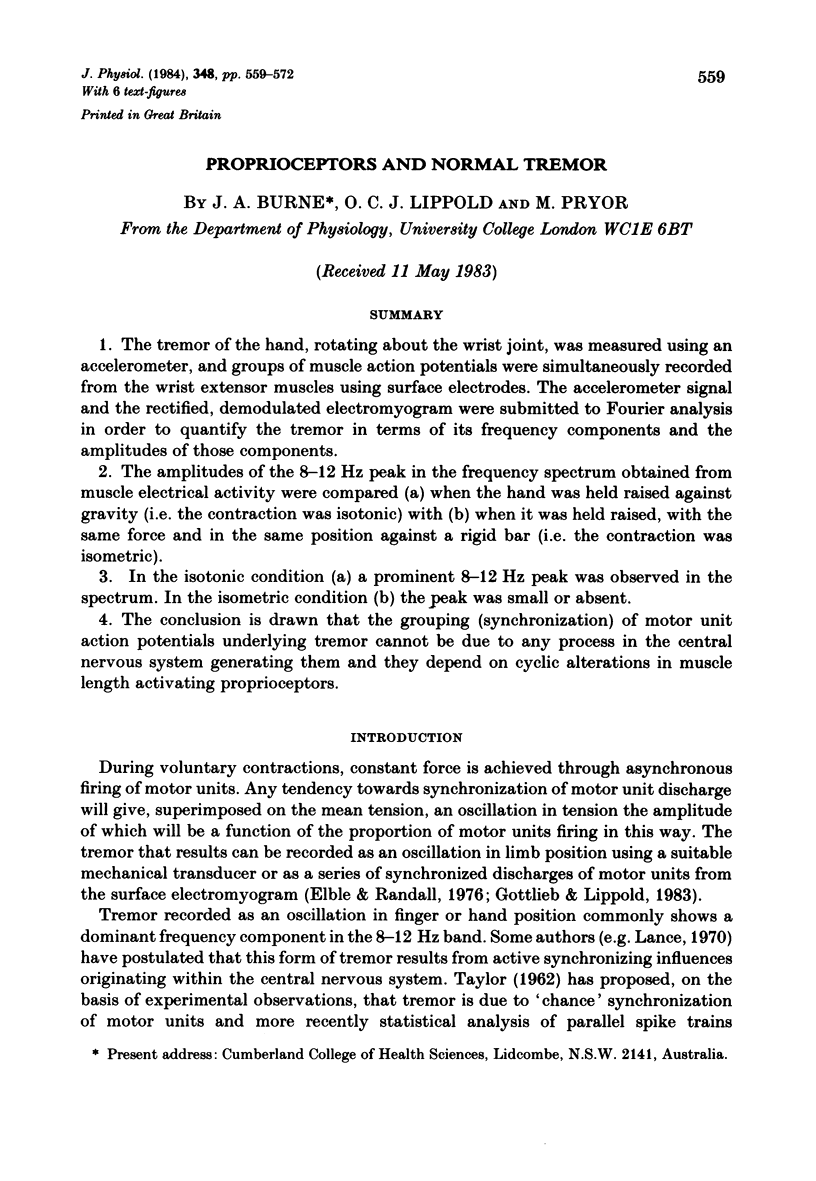

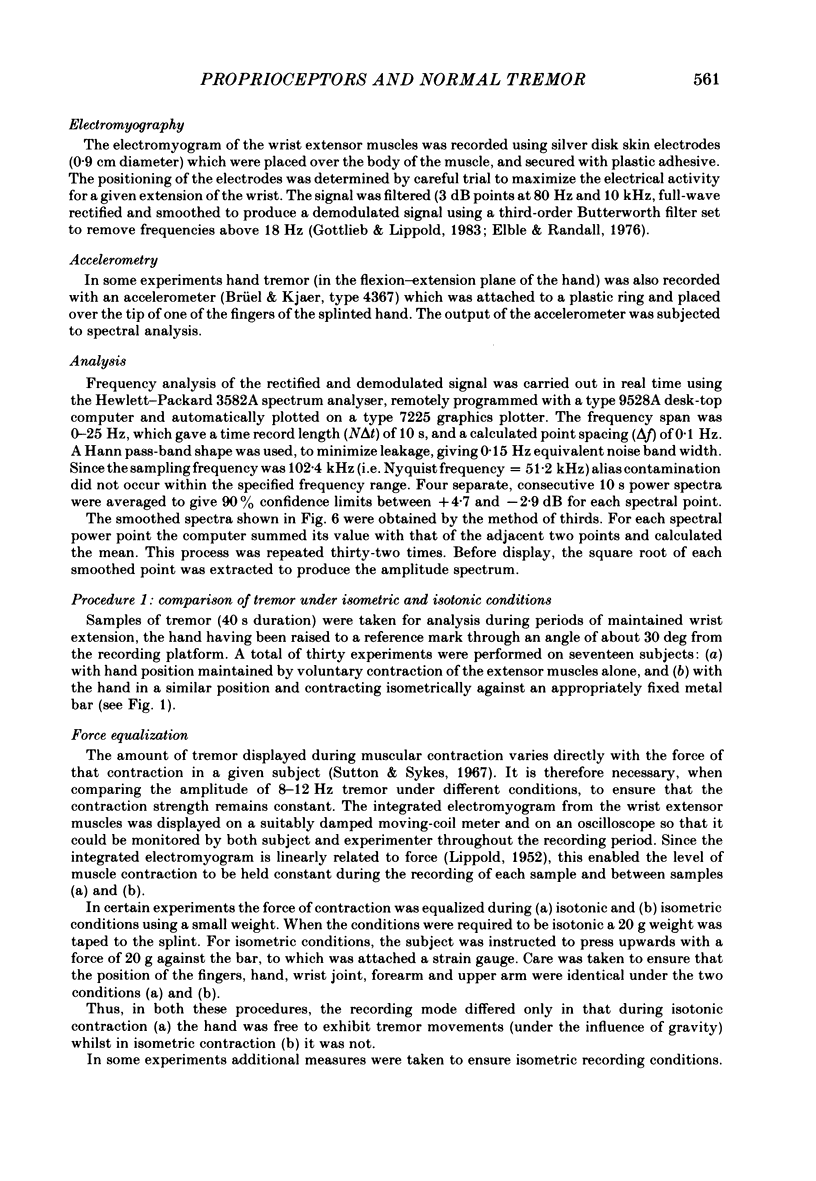
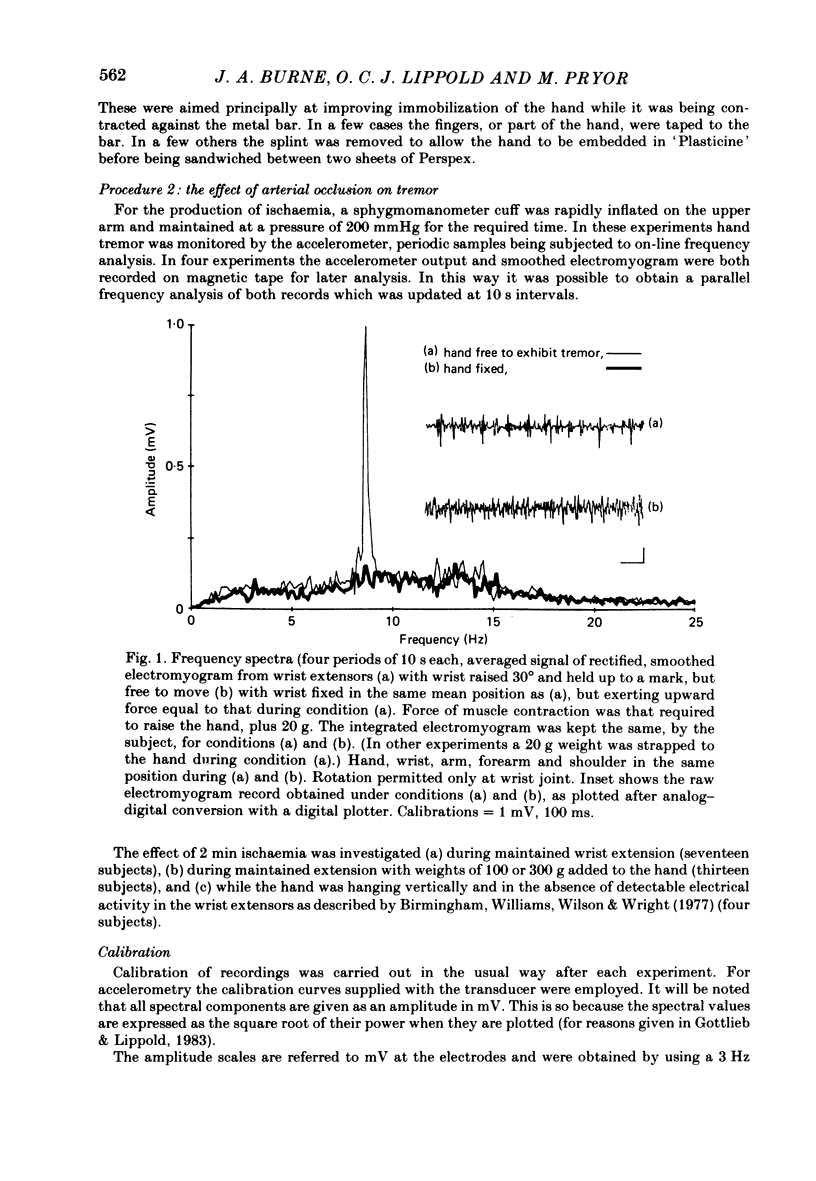
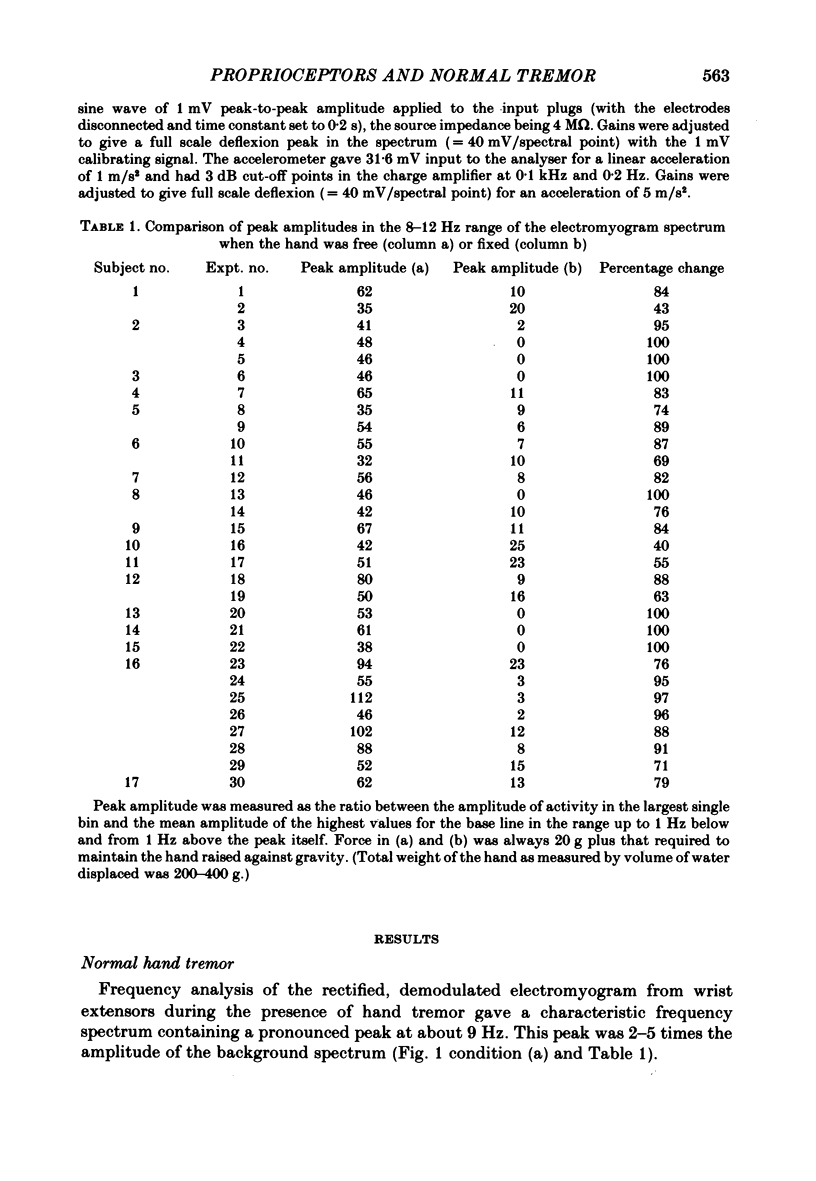

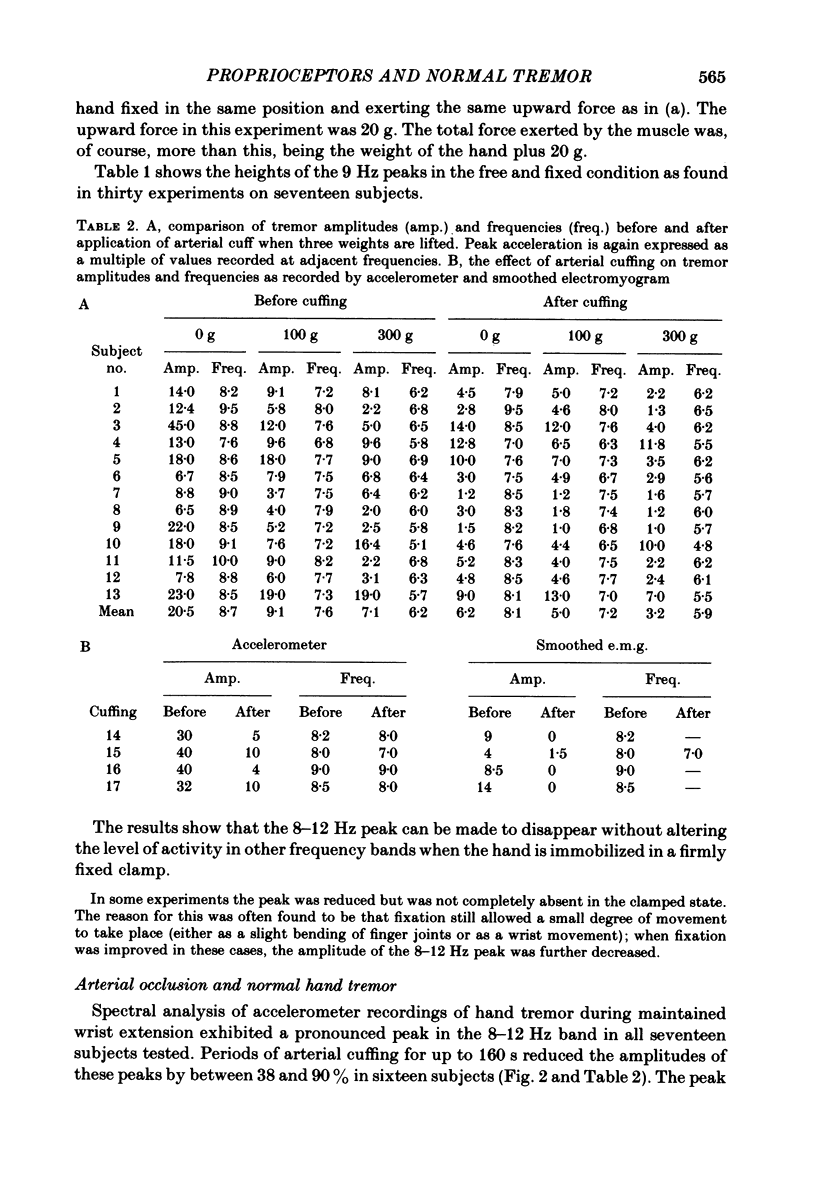
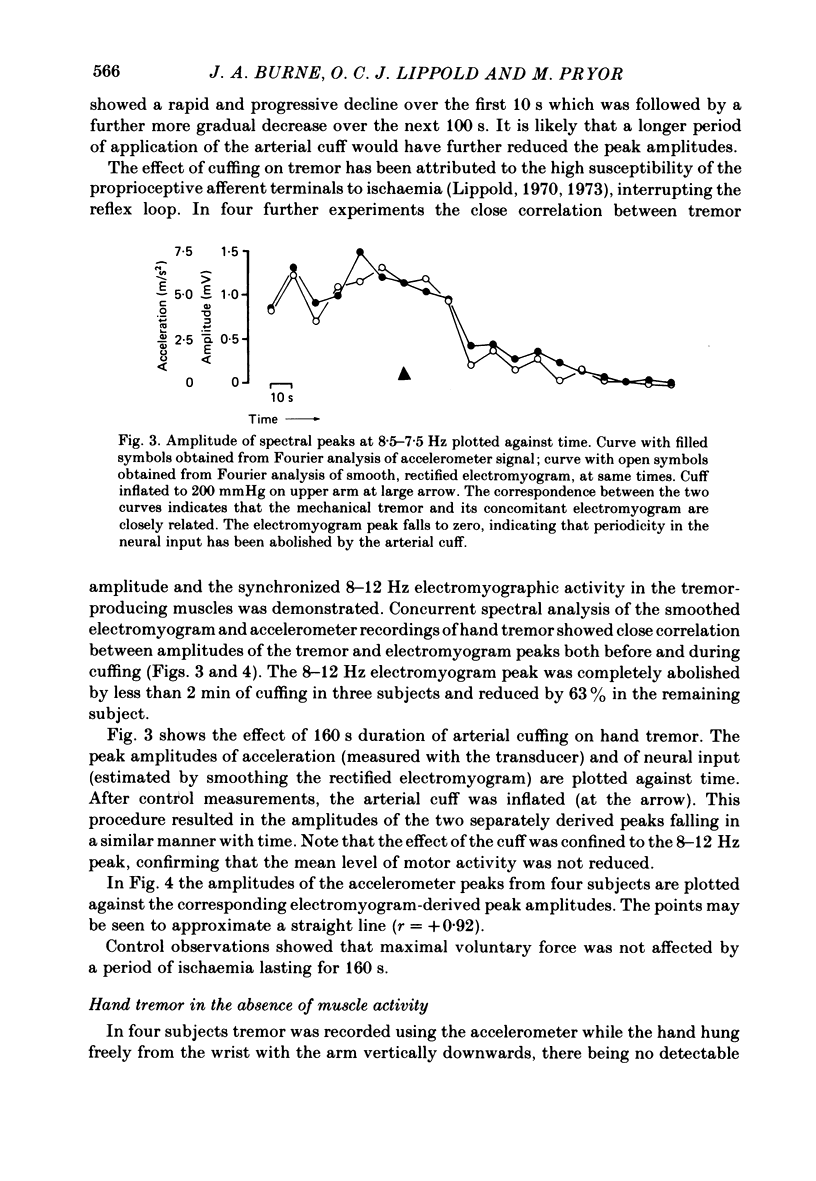
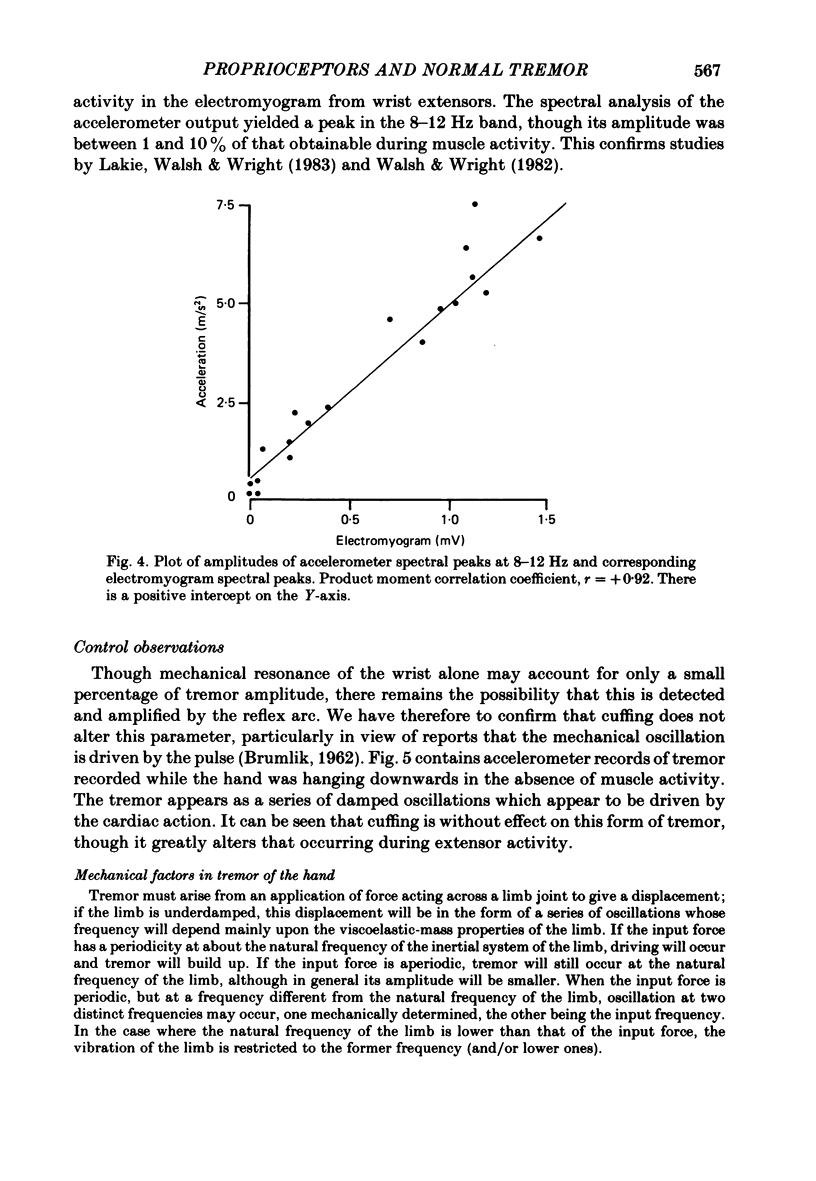
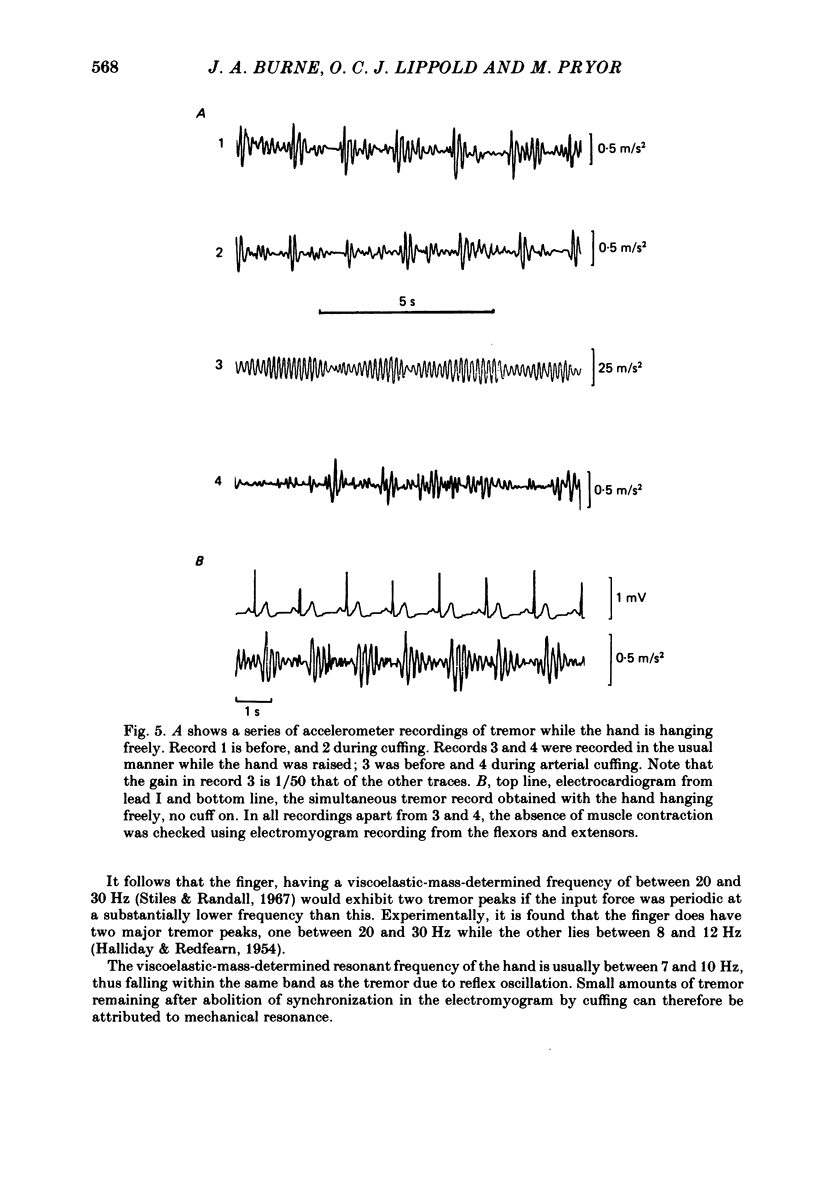
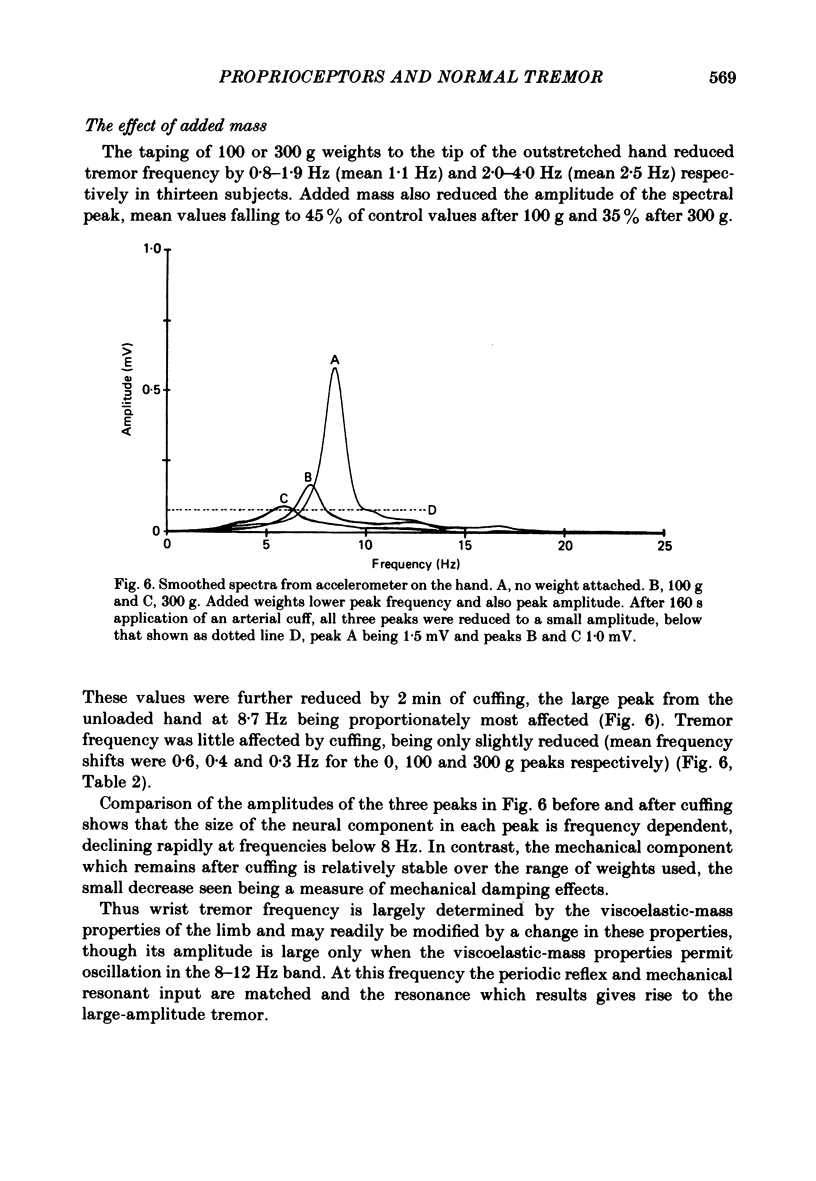
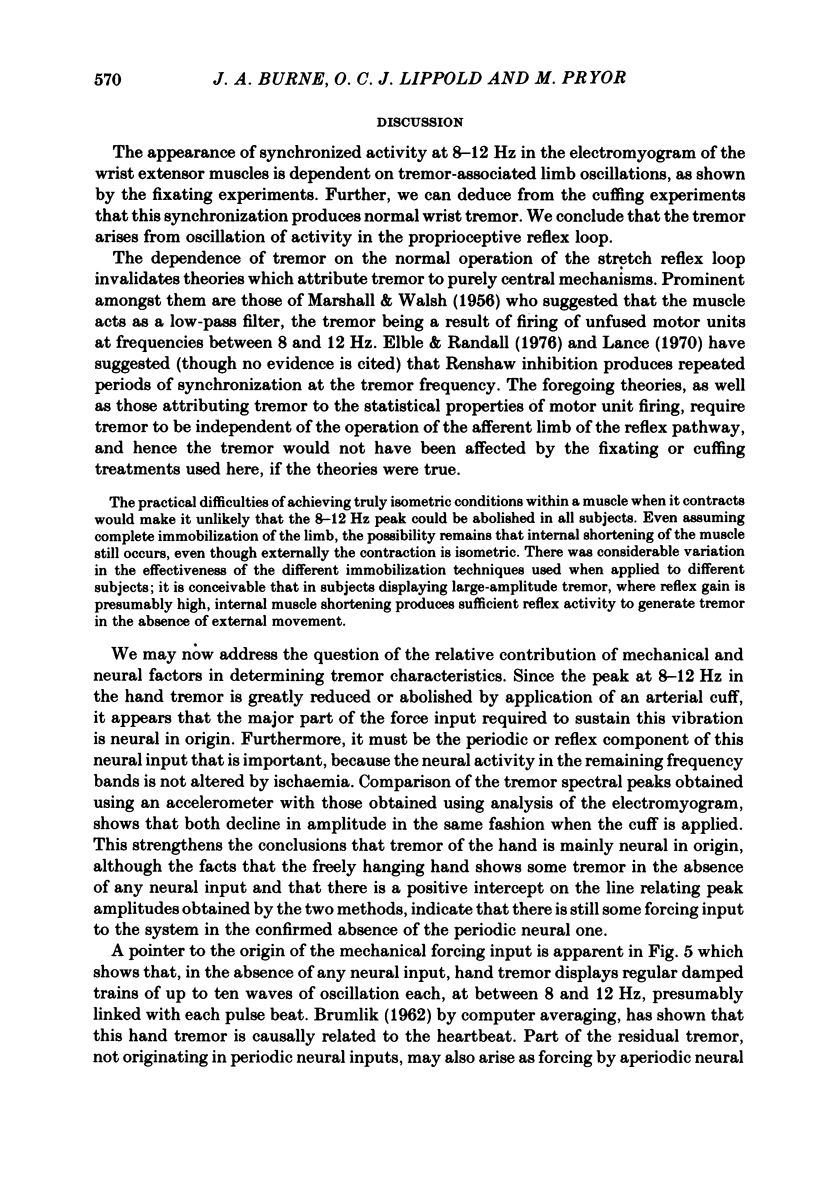
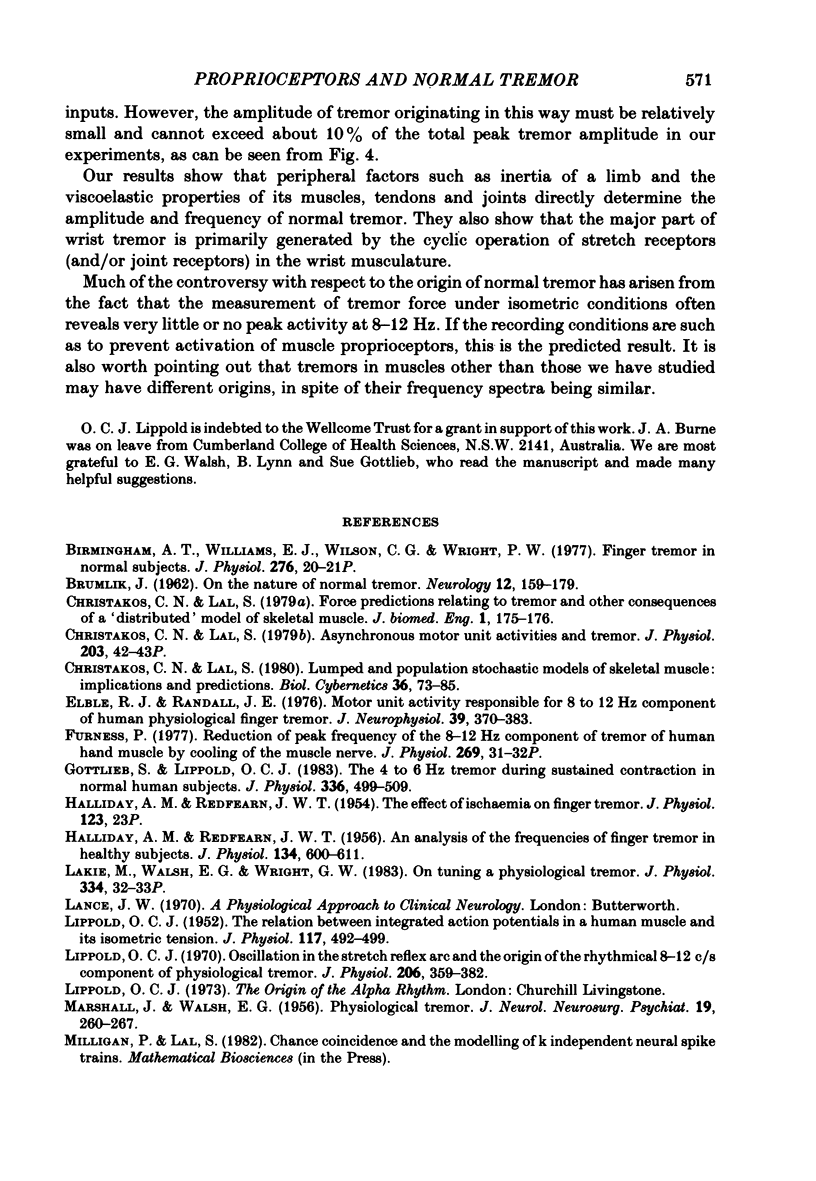
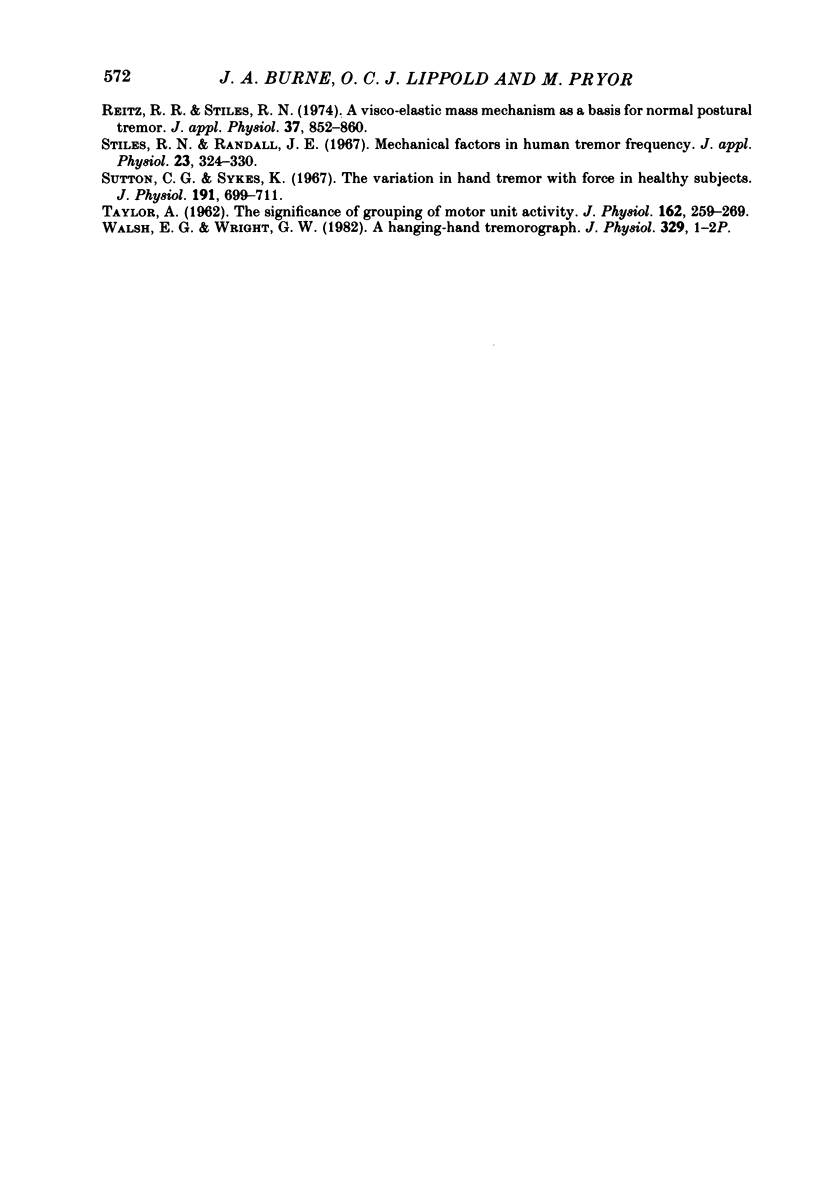
Selected References
These references are in PubMed. This may not be the complete list of references from this article.
- BRUMLIK J. On the nature of normal tremor. Neurology. 1962 Mar;12:159–179. doi: 10.1212/wnl.12.3.159. [DOI] [PubMed] [Google Scholar]
- Birmingham A. T., Williams E. J., Wilson C. G., Wright P. W. Finger tremor in normal subjects [proceedings]. J Physiol. 1978 Mar;276:20P–21P. [PubMed] [Google Scholar]
- Christakos C. N., Lal S. Force predictions relating to tremor and other consequences of a 'distributed' model of skeletal muscle. J Biomed Eng. 1979 Jul;1(3):175–176. doi: 10.1016/0141-5425(79)90039-6. [DOI] [PubMed] [Google Scholar]
- Christakos C. N., Lal S. Lumped and population stochastic models of skeletal muscle: implications and predictions. Biol Cybern. 1980;36(2):73–85. doi: 10.1007/BF00361076. [DOI] [PubMed] [Google Scholar]
- Edman K. A., Flitney F. W. Laser diffraction studies of sarcomere dynamics during 'isometric' relaxation in isolated muscle fibres of the frog. J Physiol. 1982 Aug;329:1–20. doi: 10.1113/jphysiol.1982.sp014287. [DOI] [PMC free article] [PubMed] [Google Scholar]
- Elble R. J., Randall J. E. Motor-unit activity responsible for 8- to 12-Hz component of human physiological finger tremor. J Neurophysiol. 1976 Mar;39(2):370–383. doi: 10.1152/jn.1976.39.2.370. [DOI] [PubMed] [Google Scholar]
- Furness P. Reduction of peak frequency of the 8--12 Hz component of tremor of human hand muscle by cooling of the muscle nerve [proceedings]. J Physiol. 1977 Jul;269(1):31P–32P. [PubMed] [Google Scholar]
- Gottlieb S., Lippold O. C. The 4-6 HZ tremor during sustained contraction in normal human subjects. J Physiol. 1983 Mar;336:499–509. doi: 10.1113/jphysiol.1983.sp014594. [DOI] [PMC free article] [PubMed] [Google Scholar]
- HALLIDAY A. M., REDFEARN J. W. An analysis of the frequencies of finger tremor in healthy subjects. J Physiol. 1956 Dec 28;134(3):600–611. doi: 10.1113/jphysiol.1956.sp005668. [DOI] [PMC free article] [PubMed] [Google Scholar]
- HALLIDAY A. M., REDFEARN J. W. The effect of ischaemia on finger tremor. J Physiol. 1954 Feb 26;123(2):23–4P. [PubMed] [Google Scholar]
- LIPPOLD O. C. J. The relation between integrated action potentials in a human muscle and its isometric tension. J Physiol. 1952 Aug;117(4):492–499. doi: 10.1113/jphysiol.1952.sp004763. [DOI] [PMC free article] [PubMed] [Google Scholar]
- Lippold O. C. Oscillation in the stretch reflex arc and the origin of the rhythmical, 8-12 C-S component of physiological tremor. J Physiol. 1970 Feb;206(2):359–382. doi: 10.1113/jphysiol.1970.sp009018. [DOI] [PMC free article] [PubMed] [Google Scholar]
- MARSHALL J., WALSH E. G. Physiological tremor. J Neurol Neurosurg Psychiatry. 1956 Nov;19(4):260–267. doi: 10.1136/jnnp.19.4.260. [DOI] [PMC free article] [PubMed] [Google Scholar]
- Rietz R. R., Stiles R. N. A viscoelastic-mass mechanism as a basis for normal postural tremor. J Appl Physiol. 1974 Dec;37(6):852–860. doi: 10.1152/jappl.1974.37.6.852. [DOI] [PubMed] [Google Scholar]
- Stiles R. N., Randall J. E. Mechanical factors in human tremor frequency. J Appl Physiol. 1967 Sep;23(3):324–330. doi: 10.1152/jappl.1967.23.3.324. [DOI] [PubMed] [Google Scholar]
- Sutton G. G., Sykes K. The variation of hand tremor with force in healthy subjects. J Physiol. 1967 Aug;191(3):699–711. doi: 10.1113/jphysiol.1967.sp008276. [DOI] [PMC free article] [PubMed] [Google Scholar]
- TAYLOR A. The significance of grouping of motor unit activity. J Physiol. 1962 Jul;162:259–269. doi: 10.1113/jphysiol.1962.sp006930. [DOI] [PMC free article] [PubMed] [Google Scholar]


